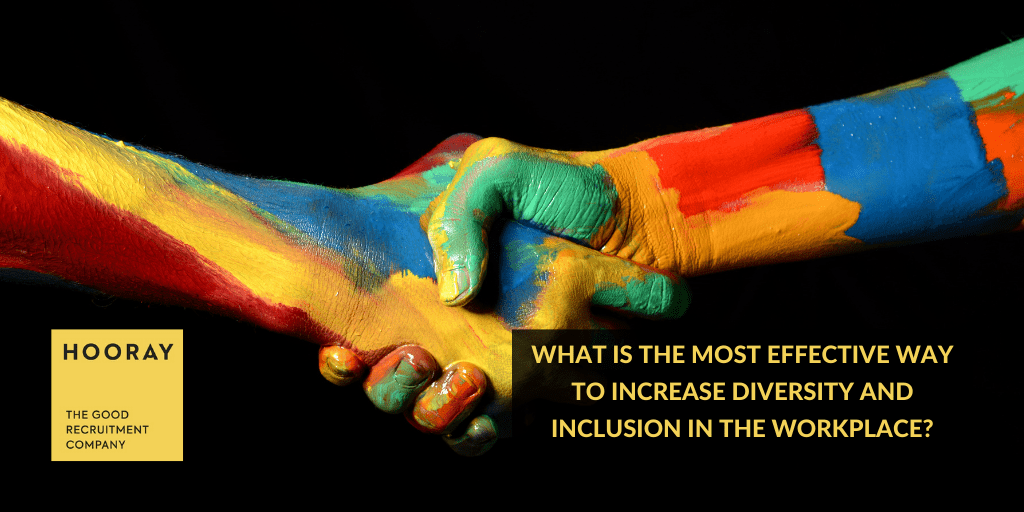What is the most effective way to increase diversity and inclusion in the workplace?

The case ‘for’ being a diverse and inclusive employer is irrefutable. There is a plethora of research dating back over the last 10 years or more that shows how businesses who provide the same opportunities for each individual, regardless of their identity or background, are more attractive as an employer and enjoy higher staff retention rates, which in turn boosts productivity and positively impacts the bottom line. Business is simply better when it is diverse and inclusive.
But while the sales pitch is easy to buy into, actually developing it in practice continues to be a challenge for a great many employers. Here we will take a look at some of the most effective ways that this can be accomplished.
Mistakes can happen, and it’s OK
When we are growing up, our family, friends and the media send out messages that we take on board which help us to define what we like, don’t like or are indifferent about. These help to form both our conscious and unconscious biases and the awareness campaign that has been gaining momentum in recent years is making us challenge our own assumptions of what is or is no longer acceptable.
But it is complex and as an employer, it is important to encourage a culture of openness whereby people feel they can openly check their understanding on such matters. By acknowledging the misunderstandings and learning from them, employers can serve as role models for the rest of the organisation by demonstrating that it is OK to get it wrong sometimes but more important to recognise how to get it right next time.
Introducing a mentoring program
The success of your diverse team depends on the systems you have in place that ensure equal opportunities and recognition for all staff. This is where a diverse mentoring system can prove transformational. According to one study, formal mentoring programs have been found to boost minority and female representation in management on average by 9 to 24 per cent. Indeed, they encourage employees to visualise and build their career paths and this in turn sparks collaboration between different races, genders, cultures and demographics; thereby, unlocking the true potential of their talent and building an environment in which everyone in the team feels valued.
Overcoming ‘tribalism’
The evidence shows that people tend to hire other people who are just like themselves. They look like us, are from the same small town, support the same football club, went to the same university, or shared the same mentor earlier in their careers. The list goes on. But effective teams are no longer built (or even success) on sameness – they thrive on difference. These ‘new’ tribes put individual differences to one side and create an environment where a cross section of ideas and perspectives are actively sought because there is a recognition that doing so means delivering outcomes which are for the common good, rather than an exclusive ‘set’ of people. It is about representation.
Train at every level
Diversity training shouldn’t be limited to the proverbial shopfloor. Rather, it must start from the top with an active commitment from the senior leadership team. This will set a precedent for members of staff. As the intermediary between senior leaders and frontline workers, middle management must also play a leading role in driving cultural change. After all, it is they who are responsible for the bulk of hiring and internal promotion activity, so diversity and inclusion training is essential in ensuring they encourage the right behaviour from their team and aim to remove barriers to access for new applicants and existing staff.
Finally, include diversity and inclusivity into your onboarding program
Hitting your hiring quota is one thing,. E embedding diversity and inclusivity into the mindset of your people from day one of joining the organisation is quite another. Your aim should be to get new starters on the same page as the rest of the organisation by clearly explaining what diversity and inclusion mean to your organisation. Setting expectations at this early stage will ensure employees are conscious of their efforts to improve inclusion from day one.